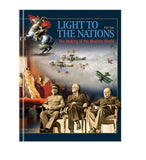The following comes from our book, Light to the Nations I: The History of Christian Civilization. For ordering information on this text and our other books, please click here.
One of the greatest, most revolutionary changes not only for Europe but for all the world occurred in the late 15th century in that western outpost of Europe, the Iberian Peninsula. The little Christian kingdoms of that land -- Castile, León, Aragon, and Navarre -- had not been at the center of learning and culture, like France. They had not given birth to the Renaissance or been the seat of the Church, like Italy. None of these Iberian states had served as the great political arm of the Church, like Germany. For over 700 years, the Iberian Peninsula had been divided between Christian and Muslim realms, which had been locked in the struggle called the Reconquest. That struggle, in the late 15th century, was about to end and a new task to open for the Christian powers of Iberia.
 |
| The Iberian Peninsula at the time of the conquest of Granada |
When Enrique IV, king of Castile and León, died in 1474, the crown went to his sister, Isabel. Enrique IV had been a weak king, and during his reign the Castilian nobles had ignored his authority. Castile was torn by many factions, and when Isabel became queen, she faced a war with Portugal. That country's king, Alfonso V, was betrothed to Enrique IV's daughter Juana and claimed the Castilian throne for her. The war ended in 1479, and in 1480 Juana entered a monastery. From thenceforth, Isabel I was the unquestioned queen of Castile and León.
In 1469, Isabel had married Fernando, who became king of Aragon in 1479. Though the two kingdoms, Castile-León and Aragon, would remain separate, Isabel and Fernando agreed that they would rule them together as if they were one kingdom. Fernando also was lord over Barcelona and Valencia. Thus, all of the Iberian Peninsula, except for Portugal and Navarre and the Moorish kingdom of Granada in the south, came under the rule of the two monarchs. Thus began the united kingdom of Spain, which Isabel and Fernando (to whom Pope Alexander VI gave the title the "Catholic Monarchs") ruled wisely and well.
 |
| The "Catholic Monarchs," Fernando and Isabel |
Not long after Isabel had secured her queenship, however, the Moors of Granada seized the city of Zahara, which belonged to the "Catholic Monarchs." This was a declaration of war that Isabel and Fernando could not ignore -- and it gave them the pretext of ending Muslim rule in Iberia once and for all.
In 1482, Fernando and Isabel's forces took the Muslim city of Alhama. So began the last war of the Reconquest, which had begun in the eighth century. Isabel raised funds for the war, recruited armies, provisioned troops, and organized what are said to be the first field hospitals in European history. Fernando directed his and Isabel's armies, as well as the strategy of the war.
Not all, however, went well for the Catholic Monarchs. The Christian forces suffered two serious defeats, but they did not give up the struggle. In 1489 Isabel even pawned the crown jewels of Castile to raise cash for the war. For 10 years, the Spanish forces fought, conquering Granada city by city. Finally, in 1491, Fernando and his army laid siege to the beautiful Islamic city of Granada, after which the Moorish kingdom was named.
 |
| The Alhambra palace in the city of Granada |
The siege of Granada lasted nearly two years. Finally, though, the Moorish power was spent. On November 25, 1491, the last Islamic ruler of Al-Andalus, Muhammad XI (known by his nickname, "Boabdil") surrendered. The gates of Granada were thrown open to receive the city's new Christian rulers on January 2, 1492. The long Reconquest of the Iberian Peninsula was at an end.
Music of Muslim and Christian Spain
A recording of music from 13th century Muslim Al-Andalus.
A recording of music from the time of the reign of Queen Isabel of Castille, performed by Hesperion XII, under the direction of Jordi Savall.




















